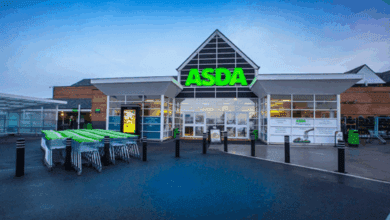Using data to take in-store shopper psychology to the next level

Register to get 1 free article
Reveal the article below by registering for our email newsletter.
Want unlimited access? View Plans
Already have an account? Sign in
As shoppers, we all know the tactics retailers use to entice us to spend more. There’s the visually appealing, uncluttered entrance of a fashion retailer that captures the imagination and gets us into store. Or the deliberate positioning of bread and milk at the back of a supermarket to ensure you walk past other tempting items.
In order to remain competitive, retailers need to achieve two goals: increase footfall and sell more items. The best way to do this is to create a better understanding of their customers, including what they buy and their decision-making process. Retailers are doing this by using data and creating insight on their customers and then acting on it through targeted 1:1 channels.
In today’s data-driven age, many retailers are augmenting traditional elements like shopper psychology with insights. And for good reason. There is endless potential in retail data. This includes data at a micro-level, where insights are gathered from every transaction at the point of sale, as well as at a macro-level, where longer-term intelligence can be used to influence and optimise store layouts. But to truly capitalise on this opportunity, where should retailers begin?
What’s in the basket?
Basket analysis is the perfect place to start. Data gleaned from what shoppers buy, their visit frequency and how much they spend, can help retailers develop an accurate picture of their customers’ behaviour.
These insights can be used in two ways; first, to deliver personalised and relevant offers to customers based on their needs and preferences, and second, to influence the setup and layout of the store itself.
Over millions of transactions, retailers can build up a detailed understanding of what shoppers buy, including those products seen as competitive offerings, and which are complementary. These insights can then be used to shape how and where products are located in-store, and with what other items they are placed.
Consider this example: a customer shops at the same store every week and always buys strawberry yoghurt. Occasionally, they also buy Greek yoghurt. However, when strawberry yoghurt is out of stock, that same customer buys raspberry yoghurt instead.
So, taking into account the millions of transactions across a nationwide store network, retailers can determine that strawberry and raspberry yoghurt are substitutable products, while Greek yoghurt is seen as complementary.
This data also helps retailers understand the customer’s decision-making hierarchy; i.e. what is the most important factor when it comes to buying a certain product? In this case, is it brand, flavour, or packaging?
From here, retailers can understand how these items are bought and with what frequency —all of which helps when it comes to configuring the store layout, shelves and fridges to optimise purchases. This could mean making it easier for shoppers to find what they want, creating displays to launch new products, or making it simpler to cross-sell other brands.
All about the layout
The insights generated by data also influence retail at a macro-level, particularly when it comes to store layout. A fashion retailer, for example, can use data to understand which items are frequently bought together. This can then be used to influence the placement of products in-store. Depending on the retailer, the store and their objective, this could result in placing the items, such as socks and trainers, closer together for shoppers’ convenience.
In larger stores, retailers can use transaction data gathered at the point of sale to understand which items are paid for at which checkouts throughout the store. So, if a high proportion of women’s skirts are paid for in the home furnishings section, it could make sense to move the two departments closer together.
Balancing data with psychology
Shopper psychology undoubtedly still has, and always will have, a role to play in retail, but retailers need to take it a step further. It’s no longer enough to rely solely on strategies like fast-paced music to create urgency during a sale, or slow music to encourage browsing. Today, retailers need to augment their customer experience strategies with more quantitative insights.
Shopper psychology really demonstrates its true potential when it’s combined with data. Retailers have a wealth of insights at their fingertips — generated at the point of sale every day. With the right technology, this data can be collected, analysed and used throughout the entire store ecosystem to inform decisions, such as the placement of products on promotion, or the location of complementary products within the store.
It will be those retailers that are able to act on this data to influence shopper behaviour that will truly reap the benefits. That might be presenting customers with a personalised offer at the point of sale to ensure a return visit or providing a money off coupon on complementary products to encourage further spend. Whatever the objective, a combination of psychology and data is key to helping retailers attain their goals of driving sales and boosting retention.
Michael Poyser, chief analytics officer, Ecrebo







